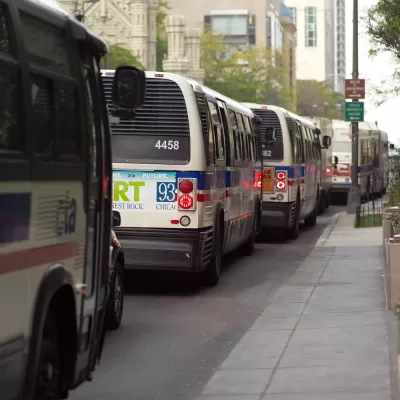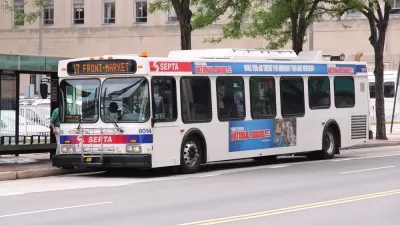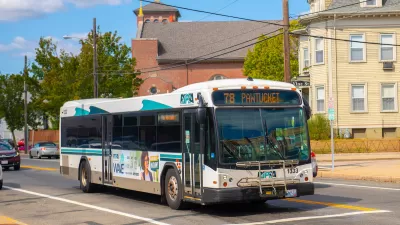All good transit wonks have an opinion on proof of payment.

Aarian Marshall reports on the expanding use of proof of payment systems for transit systems. "Europe got into 'proof of payment' systems—where wandering personnel request evidence you paid your way—in the 1960s," writes Marshall. "They made it to American shores, mostly in light rail systems, by the 1990s." The benefits of proof of payment systems, according to acolytes: "Faster vehicles, less crowding, and thus more frequent service, leading (hopefully) to more riders overall."
As 21st century technology make proof of payment easier (think Apple Pay and transit cards loaded onto smart phones), more cities are considering the model of Oslo, where even fare scofflaws are treated with a degree of indifference. The San Francisco Municipal Transportation Agency is one of the most recent American transit agencies to install a proof of payment system, using the " tap-able Clipper Card." Since that system has been in place since 2012, the SFMTA has tracked the difference in system performance. "In tourist-heavy areas, the system’s bus and streetcar dwell times per stop dropped 13 percent. Before, each person getting on or off needed 6.8 seconds. Now, they take 3. 5 seconds."
FULL STORY: Ignoring Fare Evaders Can Make Mass Transit Faster—And Richer

Montreal Mall to Become 6,000 Housing Units
Place Versailles will be transformed into a mixed-use complex over the next 25 years.

Planetizen Federal Action Tracker
A weekly monitor of how Trump’s orders and actions are impacting planners and planning in America.

DARTSpace Platform Streamlines Dallas TOD Application Process
The Dallas transit agency hopes a shorter permitting timeline will boost transit-oriented development around rail stations.

Chicago Transit: $770M Shortfall, 40% Service Cuts Loom
Despite dire warnings from transit officials, the Illinois General Assembly ended its legislative session without a solution.

Without International Immigrants, the Rural US Population Would Be Falling 58%
Census data shows that population growth in rural areas is due in large part to international migrants.

Dead End: Nine Highways Ready for Retirement
The Freeways Without Futures report describes the nation’s most promising highway removal proposals.
Urban Design for Planners 1: Software Tools
This six-course series explores essential urban design concepts using open source software and equips planners with the tools they need to participate fully in the urban design process.
Planning for Universal Design
Learn the tools for implementing Universal Design in planning regulations.
City of Mt Shasta
City of Camden Redevelopment Agency
City of Astoria
Transportation Research & Education Center (TREC) at Portland State University
City of Camden Redevelopment Agency
Municipality of Princeton (NJ)
Regional Transportation Commission of Southern Nevada





























